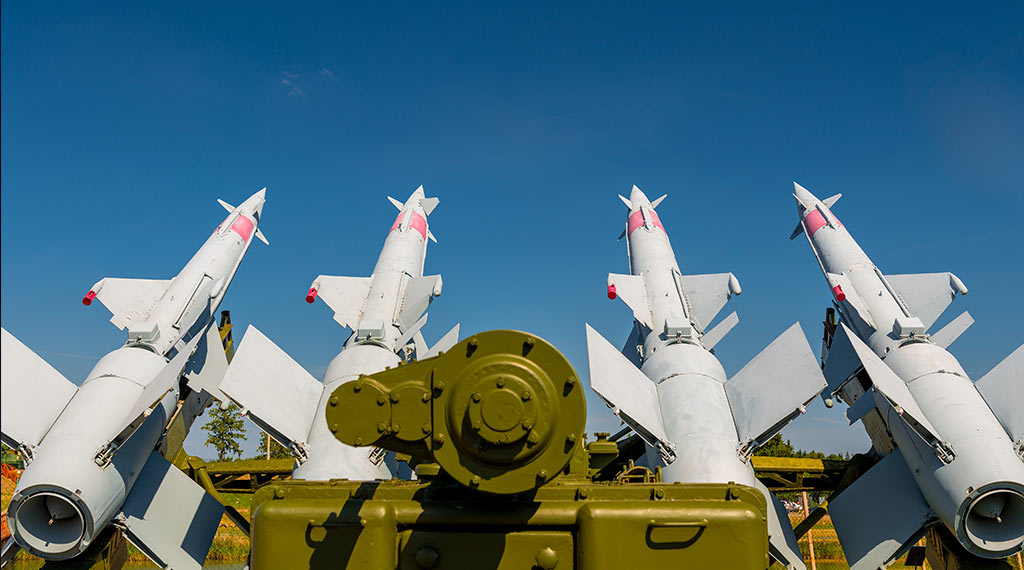
The United Arab Emirates is buying a South Korean air defense system based on the Russian 9M96 interceptor missile and radars and command and control systems developed for Russia’s S-350 and S-400 missile systems.
Known as the KM-SAM Cheongong II (Iron Hawk), South Korea developed the system in partnership with Almaz-Antey (officially JSC Concern VKO), Russia’s premier air defense system developer and with Fakel (P.D.Grushin Machine-building Design Bureau).
A number of South Korean contractors participated in the project, including Samsung-Thales – a partnership with France’s Thales Aerospace Group – LIG Nex1 Co, Ltd and Doosan.
The original Cheongung project in South Korea was planned to replace the outdated US-built MIM-23 Hawk (Homing all the Way) air defense system. Cheongong II is an upgrade that is optimized against lower-tier ballistic missile threats.
Cheongong II was first deployed in South Korea in November 2020. A complete battery consists of up to six 8-cell transport-erector-launchers, an X-band multi-function 3D phased array and a fire command vehicle.
The system can intercept an incoming missile at an altitude of 20 kilometers, or 12.4 miles. The Cheongung missiles are hit to kill instead of a fragmentation-type warhead.
The South Korean partnership with Russia’s aerospace and defense industries represents an effort by South Korea to counter missile threats from North Korea and also suggests the Koreans want to be in control of their own air defenses and not rely on the United States, which mans and operates the only THAAD system in South Korea.
The UAE has acquired Patriot PAC-3 advanced missile defenses from the United States, but US Patriots have been, at best, modestly effective against Houthi-launched Iranian ballistic missiles and ineffective against drones.
US being bypassed
The UAE, meanwhile, “suspended” a purchase of F-35 jet fighters after the US imposed conditions on the sale which the UAE found unacceptable. Washington has been promoting negotiations with the Houthis and has not supported military operations by Saudi Arabia and the UAE in contesting Houthi attempts to overthrow the Yemen government.
Meanwhile, Saudi Arabia, which also has the Patriot PAC-3, has reported it is running out of interceptor missiles for its Patriots and has asked for more. Whether the US will deliver missiles, and when, remains an unanswered question. Saudi Arabia faced 375 cross-border attacks this past year, mainly missiles and drones, launched by the Houthis.
The UAE will not be the first to seek alternatives to the US Patriot system. South Korea, which has Patriots and is seeking to upgrade them, has moved on in its partnership with Russia in developing the Cheongung and L-SAM, South Korea’s version of the US THAAD (TerminalHigh Altitude Air Defense).
Like Cheongung, LSAM is a development with the Russians and is based on the 48N6E interceptor missiles. That missile has a range of some 400km, or 250 miles, making it the longest range missile available for Russia’s S-400 Triumf air defense system and it may be able to intercept hypersonic targets.
According to the publication Global Security, the L-SAM system “will intercept missiles at an altitude of 40km or above [or an altitude of 50-60km],” moderating worries that the PAC-2 and PAC-3 are not enough to shoot down DPRK missiles, possibly tipped with nuclear warheads.
Click HERE to read more.
- Trump and Ukraine: what Russia wants, what Trump could do - November 8, 2024
- North Korean troops in Kursk could backfire on Moscow, Pyongyang - November 1, 2024
- Secure enclaves: bad CHIPS Act idea wasting billions - August 12, 2024
